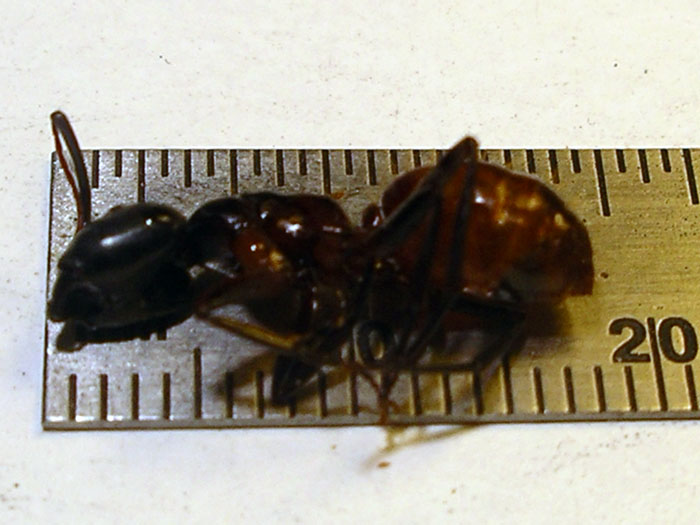What are bigger ants in NA? Carpenter ants?
I am wanting a colony of bigger ants for easier observing.
Thanks.

What are bigger ants in NA? Carpenter ants?
I am wanting a colony of bigger ants for easier observing.
Thanks.
depending on where you live they will be wide spread, and camponotus is found all over NA. to answer your question exactly, what are bigger ants found in, they are found in areas that arent as disturbed by humans. Most ants near houses get exterminated for being "pests" They have a false perspective of ants.
I think Camponotus ocreatus is the largest species that has ever been successfully kept in California, but do not take my word for it.
Is that bigger than Camponotus herculeanus? Because C. herculeanus get quite big from what I understand.
EDIT: I just looked it up. According to antwiki, C. ocreatus workers range 4-12mm and C. herculeanus range 5-12mm. Pretty much the same size.
DOUBLE EDIT: The largest species we get around our region is Camponotus. There are a few different kinds but probably the most popular and abundant is Camponotus pennsylvanicus. They are the all black carpenter ants.
Is that bigger than Camponotus herculeanus? Because C. herculeanus get quite big from what I understand.
EDIT: I just looked it up. According to antwiki, C. ocreatus workers range 4-12mm and C. herculeanus range 5-12mm. Pretty much the same size.
DOUBLE EDIT: The largest species we get around our region is Camponotus. There are a few different kinds but probably the most popular and abundant is Camponotus pennsylvanicus. They are the all black carpenter ants.
Not sure about the average sizes, but I have seen some really big C. ocreatus majors. This is the largest one I've found so far.

I will add on in a more general sense.
Camponotus are the largest species you will find. They tend to be slow growing and slower moving, good if you like relaxing species. Pretty easy to keep and feed. They do demand a good hibernation period and will hibernate with their larvae.
If you want a faster growing colony, you could look into Formica. They are smaller than Camponotus, but at 5-8mm they are still pretty easily watched. These rarely sit still and there is always action in the outworld once the colony tops 50 workers. A bit skittish unless you ensure the surface their formicarium rests on isn't bumped, or that your shadow doesn't fall across them (easily fixed with an LED on the far side of the formicarium). These colonies grow fast once the first workers arrive. Mine have 2 batches of eggs, hatch and eclose by the time the Camponotus get their first batch eclosing. These also need a decent hibernation so the queen has time to rest and recoup, but they go full tilt once they are out of hibernation.
For easier viewing, the naked eye may see lots, but a magnifying glass or a USB microscope let you see way more smaller details.
"Always do right. This will gratify some people, and astound the rest." -- Samuel Clemens
People have found some super large Camponotus ocreatus before.
Neoponera villosa (southern Texas only) is a bit more slender, but about as long as C. ocreatus.
0 members, 0 guests, 0 anonymous users